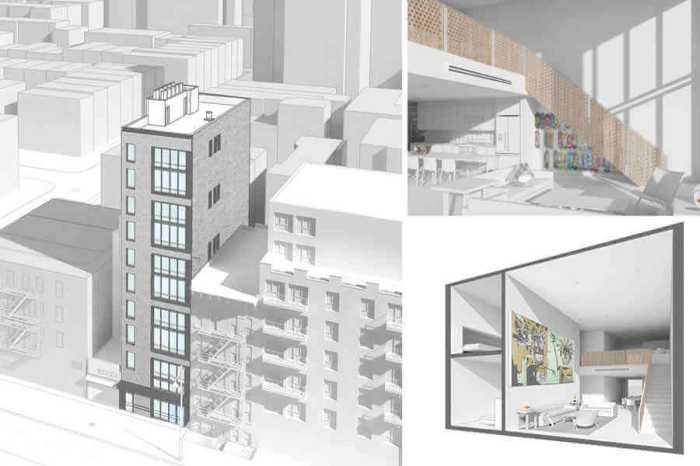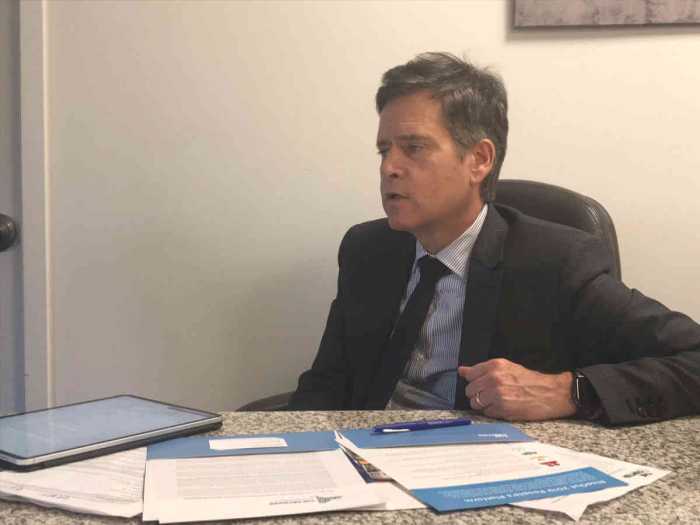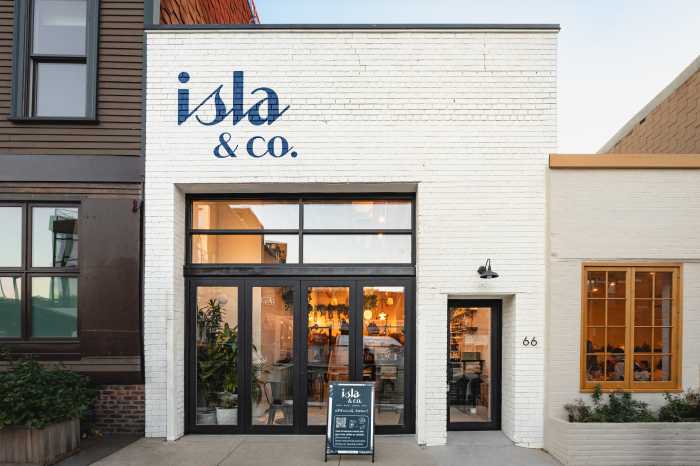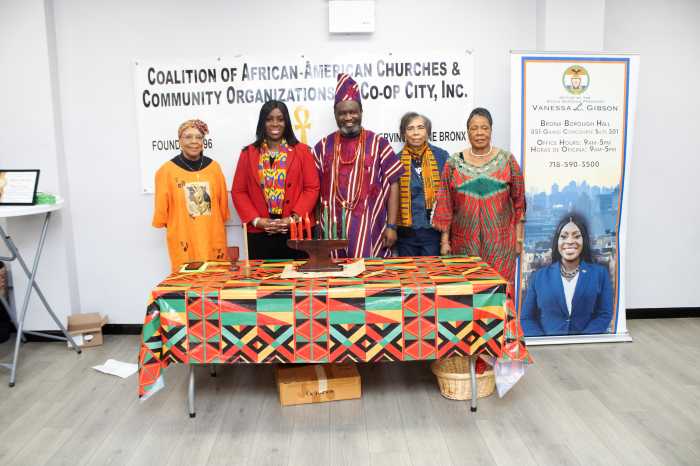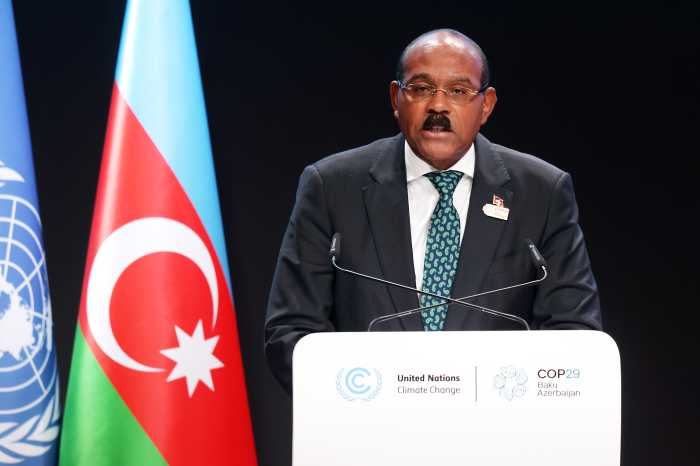ILLUSTRATION BY MICHAEL SHIREY
BY PAUL SCHINDLER | Ben is a confident and well-spoken 19-year-old who has worked the past couple of years as an executive receptionist in New York City. With a gently wry sense of humor, he recently discussed his love of doing drag, especially when going out for late-night screenings of “Rocky Horror Picture Show.” He also mentioned working on creating cosmetic products of his own made from organic ingredients.
But Ben, who arrived in New York at 17, has also endured stretches of living on the street. Once, for a week and a half in autumn weather, he slept every night in Brooklyn’s Prospect Park. Home-schooled in New Hampshire, he completed his high school requirements by the time he was 14, and then began taking college classes. His troubles keeping a roof over his head just three years later, then, are especially striking.
When Ben was 16, he felt confident enough about his place in the world to tell his mother and his Baptist pastor father he is gay, something they refused to accept. His father is friends with the president of a small Baptist college in the California desert, and Ben was soon packed off to spend a year there, where he was subjected to conversion therapy to rid him of his homosexuality. He suffered no physical abuse, he said, but he was only able to leave the campus with specific approval and had to sign a consent form allowing school officials to search his possessions and his computer any time they wished.
De Blasio aggressively expands youth emergency shelter, but controversies remain
“They even tried to set me up with a girlfriend,” Ben deadpanned. “That didn’t work out.” The year he spent in California, he said, turning serious, was “lonely and very depressing.”
At 17, Ben left the Baptist college but felt unwelcome back home in New Hampshire. In the two years he’s been in New York, he’s lived in several homeless facilities specifically focused on serving the needs of LGBT youth. Since June, he has been in transitional housing at Covenant House, by far the city’s largest provider of shelter — both emergency and longer-term “transitional” housing — for homeless kids 21 and younger.
Ben and two other youths — an 18-year-old lesbian and a 20-year-old gay man — that Gay City News met with at Covenant recently left no doubt that they are thriving there. Their feedback stands in stark contrast to a long-running narrative about the West 41st Street facility, which houses about 150 emergency and 110 transitional residents.
Ben recalled that just days after arriving, he sat in the office of Brian Bob — a gay man whose 24-year career at Covenant has included outreach work in Los Angeles and Oakland as well as in-house counseling here in New York — trying on high heels he would wear in the annual LGBT Pride March down Fifth Avenue.
“There I was all decked out in drag heading down to gay pride, and one of the straight residents here telling me how great I looked,” Ben said.
Bob, he said, is not the exception at Covenant: “The staff is very supportive… they always have your back.”
Ben’s sunny account of his experiences at Covenant House is likely welcome news to the Department of Youth and Community Development, the New York City unit responsible for providing housing for a category of young people 21 and younger known as runaway and homeless youth, or RHY. As part of a campaign commitment made last year to advocates — including those working on behalf of LGBT youth — Mayor Bill de Blasio has increased the number of emergency beds for homeless youth by 100 in his first year in office, a number DYDC said represents an 85 percent surge in emergency beds. The contract for 76 of those 100 went to Covenant House, the remainder to Inwood House, which serves homeless young women who are pregnant or have children.
The mayor’s campaign pledge included a commitment to dedicate a portion of the shelter bed increase to the special challenges faced by LGBT youth. In a widely cited 2007 census of the city’s homeless youth, the Empire State Coalition estimated that on an average night roughly 3,800 youth 24 and younger are without safe permanent shelter in the city — and that as many as 40 percent of them are LGBT or questioning. Data from the city and advocates indicate there are less than 400 beds in total — emergency and transitional — to serve the city’s vulnerable transient youth.
When the de Blasio administration announced that 32 of the 100 new beds would be for LGBT youth, advocates were cheered. The decision to locate all of those 32 beds at Covenant House has been more controversial.
Founded in the late 1960s by Father Bruce Ritter, a Catholic priest, Covenant, by the 1980s, was widely known among LGBT youth advocates as a place where gay kids faced hostility from staff and violence and bullying from their straight peers. Steve Ashkinazy was the clinical director at the LGBT-focused Hetrick-Martin Institute in the 1980s and recalled that the situation then for LGBT youth at Covenant was “like something out of Dickens.” As advocates pressed Covenant to improve its performance, he said, there were always “promises of change,” but in the end the organization was “incapable of change.”
Ritter was forced to resign in 1990 in the face of mounting charges of sexual misconduct made by male youths under Covenant’s care. The priest’s last ditch claims that the allegations were “garbage” did nothing to bridge the gulf of mistrust between the organization and the LGBT community.
Carl Siciliano, who in 2002 founded the Ali Forney Center (AFC) that provides services and housing tailored to the needs of homeless LGBT youth, is one of several advocates convinced that Covenant House has changed little from the Dickens-like climate Ashkinazy saw there in the 1980s and ‘90s. He first brought concerns about the 32-bed contract to Gay City News in the late summer, and from the start was up front in acknowledging that neither AFC nor other LGBT-specific shelters were prepared to step up in timely fashion to provide the beds that went to Covenant.
According to Siciliano, after learning of the DYCD contract early this year, he and his staff began querying young people who live in AFC housing or who access its services and its Harlem drop-in center about past experiences they had with Covenant.
“I’ve never examined Covenant as much as I have in the past six months,” he told Gay City News. “At this point I’ve heard about 30 reports of anti-LGBT violence, bullying, and harassment.” The incidents, he said, have all happened within the past 12 to 24 months.
Siciliano’s scrutiny of Covenant may have intensified recently, but he’s long been of the view that it fails LGBT youth. In a story Gay City News wrote about AFC about a year after its founding, several youth there related horror stories about their experiences at Covenant and Siciliano talked about a number more he’d heard — including one youth’s experience of being urinated on by his straight dorm mates.
Several months ago, 11 years after Gay City News first reported Siciliano’s account of that incident, Rolling Stone magazine, in a story on homeless youth, quoted him citing the same example of anti-gay abuse at Covenant. Rolling Stone’s story made no other mention of Covenant, which said the magazine never contacted it for comment and did not run a letter to the editor in response.
Covenant’s desire to participate in stories about its work with LGBT youth is a departure from its attitude in 2003, when it declined to comment for Gay City News’ original story about Ali Forney. When the newspaper contacted Covenant about Siciliano’s current concerns, its senior staff made themselves available for nearly four hours of on-site interviews, during a portion of which Ben and two of his LGBT peers living there participated.
Siciliano also spent significant time in recent months speaking with Gay City News, which in two visits to AFC’s Harlem drop-in center in September and October met with roughly a dozen of its clients. A good number had spent at least some time at Covenant in the past year or so, and some, but not all of those who had, recounted troubling incidents they experienced or witnessed there.
Gay City News heard widely disparate views about Covenant from youth living there versus some interviewed at AFC, and the radically different picture that emerges could lead readers to make judgments about the credibility of one account over another, even though only a small amount of any one youth’s experience can be conveyed in this story. As a result, even though some who spoke to Gay City News agreed to have their last names printed, only first names will be used in relating these accounts, provided — as they are — by a group of young people already facing plenty of challenges in life.
Victoria, a 20-year-old lesbian who recently left Covenant House after enduring what she said were sexual orientation conversion efforts by a counselor. | GAY CITY NEWS
Ishmael is a 21-year-old who grew up in Brooklyn but was moved around in his youth among his extended family here and in South Carolina, probably due, he said, to the fact “that I was a little defiant.” He first encountered Covenant House when his mother asked him to leave home after he turned 18. He described Covenant as “just like the projects. A lot of people up to no good. Smoking drugs, alcohol.” Showing off a facial scar of an inch or two just above his neck, Ishmael explained that last year another resident, coming off an elevator, slashed him with a razor.
Ishmael, who now lives in AFC housing — which he said provides both “a homey feel” and “encouragement” — did not condemn Covenant outright. “It’s not all bad,” he said. “I made a few connections with a few staff members.”
Malik, 19, currently lives in transitional housing at Hospitality House on Staten Island, and has accessed social services from a variety of providers serving youth, including AFC, the Door, and the Streetwork Project. Having lived in Covenant House on and off from August 2013 through this past March, he believes it is “a lot more violent than the others. The capacity is the problem. Nobody should have to live like that, especially since people come to them asking for help. I would say to de Blasio’s face, with cameras on, that it needs to stop.”
Malik, who grew up in East New York, has cerebral palsy and a withered arm, but said that while still at home he was arrested when police took his grandfather’s side when he fought back against the older man’s abuse. He spent time on Rikers until his family asked that the case be dropped. At Covenant, he said, he faced harassment for his disability and was once punched in the head. Malik also said he witnessed gay-bashings in which young men were “kicked, stomped on” and called “homo.”
“They told me to my face you’re not worth anything,” he said. “Sometimes I would cry in the bathroom and let it out. I’ve seen people get shot, people get stabbed. Not a day when the police aren’t called.”
The most startling story, however, came from Raymond Brown, who is Siciliano’s husband. Brown, who works with LGBT youth in a weekend program run out of St. Luke’s Church in the West Village, said that roughly a year ago a young transgender woman there told him she had suffered a gang rape and stabbing at Covenant House. Brown said the woman has not come around St. Luke’s recently and he is unaware if she reported her story to Covenant officials, the police, or any other authorities. Jenna Tine, who has run the St. Luke’s program for more than a decade, saw the young woman speaking to Brown, but did not hear the account directly from her.
Accounts like those of Malik and Ishmael and what he heard from his husband lead Siciliano to talk about rampant “gang” violence at Covenant. Kate Barnhart, who directs New Alternatives for LGBT Homeless Youth, a West Village-based group that provides case management and other services, echoed the view that youth gangs intimidate the most vulnerable among Covenant’s population.
Backing up his assertions, Siciliano provided Gay City News with a tally prepared by the city Public Advocate’s Office, which showed that between January 2012 and July 2014 — a 30-month period — 1,415 NYPD records involving Covenant House’s West 41st Street address were compiled. It’s not clear, however, whether that statistic means anything at all.
Asked about those numbers, Covenant House’s executive director Creighton Drury said he had examined 690 such records for a calendar-year period. A single incident, he said, could result in multiple records, sometimes as many as seven or eight. In some cases, the “incident” involved was a crime committed against a Covenant resident by an outsider drawn to the facility’s perimeter, which faces an elevated ramp running into the Port Authority in an out-of-the-way swath of the far West Side. And, Drury said, if a youth who once lived at Covenant is arrested for turnstile jumping and gives its address, that, too, will become a “record.”
The 690 records, according to Drury, pointed to only 15 violent incidents in or near Covenant — eight involving criminal behavior by outsiders targeting residents there and seven carried out by those living there. Noting the metal detectors at the building’s entrance, he said guns and knives are not a problem there and that most incidents between residents requiring intervention involve pushing and shoving.
Detective Mike Petrillo, for many years the community liaison at the 10th precinct, backed up Drury’s explanation, both on the interpretation of NYPD records and on the overall climate at Covenant. If an incident is phoned into 911, that creates a record, police arriving on the scene spawns a second record, any arrest a third, and a cross-complaint by the alleged perpetrator a fourth, he said.
Crediting Drury, who has been at Covenant for about two and a half years, with improving the organization’s communications with the precinct, Petrillo said, “I am not seeing violent crime coming out of the building.” Most complaints from residents, he said, involve theft of personal possessions, especially cell phones. Petrillo said no physical confrontations in recent memory had spiraled out of control at Covenant.
Out gay City Councilmember Corey Johnson, whose district includes Covenant House, said the organization “reached out to me in a proactive manner” to suggest he visit and learn about its programs. He has also discussed the situation there with Petrillo, AFC’s Siciliano, and others.
Acknowledging that concerns about safety, particularly among LGBT residents, have come to his attention, Johnson said, “I have followed up with Covenant House each and every time something’s been reported to me. And Covenant House has presented information and evidence that some of this information is either entirely false or misleading.”
In a November 21 meeting, Susan Haskell, a Department of Youth and Community Development (DYCD) deputy commissioner responsible for youth service programs, voiced similar confidence that violence is not a significant problem at Covenant. All DYCD contractors are required to file an “incident report” any time there is an “intentional incident of wrongdoing,” when a doctor, an ambulance, police, or 911 is called, or when “the situation may be sensitive or of media interest.” RHY contracts, she said, account for a small part of all DYCD incident reports, less than 100 a year, and Covenant House does not make up a disproportionate share of reports filed by LGBT homeless youth providers.
“Over all, our investigations have not yielded evidence of violence at Covenant,” Haskell said. “We do thorough site monitoring and contract monitoring. We don’t see evidence of violence or evidence of severe harassment.”
Covenant House, Haskell said, has reported no violent crimes in the past several years, though she has received some reports of serious incidents at Covenant from Siciliano. “If there is an individual’s name that we can follow up on, we do,” she said, noting that typically is not the case but that in one situation — the stabbing Ishmael described to Gay City News — all parties involved agreed the incident as originally reported by AFC did in fact occur.
Haskell voiced frustration at her sense that Gay City News had learned via AFC of other violent incidents, including beatings and rape, about which Siciliano had not brought specific information to DYCD. For his part, Siciliano said he’s been diligent about passing along any information he felt ethically bound to bring to the city’s attention.
Haskell’s team did recently vet an incident known to Gay City News and brought to DYCD’s attention by Siciliano — not one involving violence but one that still raises significant concerns about the safety of LGBT youth at Covenant House.
Henley, 20, and Grace, 18, who both spoke positively about their experiences in Covenant House. | GAY CITY NEWS
In an October interview, 20-year-old Victoria, who grew up in the Burnside section of the Bronx, told the newspaper that a psychologist at Covenant, Antoinette Moore, who in 2011 celebrated her 50th anniversary as a Catholic nun, talked about the Bible in an effort to steer her away from living her life as a lesbian.
Like her gay older brother, Victoria experienced trouble at home because of her mother’s hostility toward her sexual orientation. Living in Covenant’s Rites of Passage program — the same transitional living initiative that Ben talked about with enthusiasm — she had begun a retail sales training program and was also going to school. Though bothered when male residents taunted her that being a lesbian was “mad nasty” or her dorm mates accused her of looking at them funny, Victoria told them she had a girlfriend and didn’t need to bother with any of them.
She sought counseling, she said, because of a marijuana habit she wanted to break and several times had asked for a counselor other than Dr. Moore. When she met with Moore, Victoria said, “She was trying to say, ‘You can’t be like that. You might not want to stay with a person like that forever. That’s not in the Bible.’ I told her I like my girlfriend.”
Siciliano, who sat in on the interview with Victoria, told the newspaper he felt obligated to bring her story to DYCD immediately. Haskell confirmed that DYCD spoke to both Victoria and Covenant officials, though not Moore herself, and said Victoria’s recent move into AFC housing resolved her problem. Asked whether she believed Moore had in fact inappropriately sought to engage Victoria in sexual orientation conversion therapy, Haskell was guarded in her response.
“I don’t have a judgment,” she said, explaining that the goal in such investigations is to ensure that the conduct alleged not happen again. Pressed to explain how she reached that conclusion, Haskell said Moore would not be taking on new counseling clients at Covenant, though she would not say if that was a direct result of Victoria’s experience.
Covenant offered a different conclusion about the allegations against Moore. Saying Covenant could not confirm the identity of the resident who claimed they were subjected to religious coercion regarding their sexuality, Derrick Boone, a psychologist who is associate executive director there and said he identifies as bisexual, acknowledged that questions were raised regarding Moore’s counseling. After speaking to her and reviewing her case notes, Boone said, he is satisfied she did nothing wrong.
“We take these reports very seriously and anything like that would be unacceptable,” said Boone, who made no mention of Moore not seeing any new Covenant House youth for counseling.
Boone’s confidence in Moore may be misplaced, given her history. A 2005 story in the Villager, a sister publication to Gay City News, reported on concerns that Eric Hartman, a former Covenant House intern, voiced about a counselor there who “told gay clients that their homosexuality was the root of their problems and they should simply stop being gay.” Hearing that had happened from several LGBT residents, Hartman started suggesting to others looking for counseling that they seek out emergency room care at St. Vincent’s Hospital, at the time still open. Though the Villager story did not name Moore, Hartman, contacted recently, confirmed that Moore was the counselor in question.
If Boone’s conclusions about Moore were overly credulous, it is harder not to credit the passion he and Drury bring to discussing the new approach Covenant is bringing to a mission it’s been at for a long time. According to Drury, the organization underwent a strategic reassessment about a year and half ago and now embraces a “sanctuary model” that is “evidence-based” and “trauma-informed,” and therefore more tailored to the individual needs of its youth clients. Since that time, psychologist Boone has been brought on as associate executive director, a psychiatrist has been hired to head up the mental health services offered by Covenant’s health clinic, and the social worker staff has been increased from five to eight.
Drury emphasized, for example, that youth are assigned to housing according to their gender self-identification, though a brief video interview Siciliano shared with Gay City News suggested that at least one evening intake worker at Covenant this past summer refused to accept a transgender male youth’s request to be put on the male floor. The youth said he left Covenant and spent the night on the streets.
Early this month, Covenant House International, which operates homeless youth facilities in 26 North and Central American cities in addition to New York, entered into a partnership with the True Colors Fund, a nationwide group founded by singer Cyndi Lauper that advocates for LGBT homeless youth and provides technical expertise to groups working in the field. According to Jama Shelton, who worked at Ali Forney for nine years before joining True Colors early last year, her group is preparing assessments of each of Covenant’s locations based on observations conducted on-site and will then customize trainings to the needs of each. The True Colors partnership wins praise even from some LGBT advocates who harbor continuing concerns about Covenant’s suitability to serve LGBT youth.
Besides Siciliano, the most outspoken skeptic is New Alternatives’ Kate Barnhart, who voiced disappointment about the new beds going to Covenant and said, “I’ve never met a youth that felt fully comfortable there.” She mentioned a transgender male client of hers who recently reported having been beaten up by other residents at Covenant.
“It was the typical pattern of escalating violence and the staff doing nothing,” she said.
Barnhart acknowledged, however, that she is “not hearing as many horror stories” as she used to, though she said that could be because she tries hard not to refer LGBT youth there.
“My program practices diversion,” she said, “and others do, too.”
Jenna Tine, the director of the weekend program at St. Luke’s, showed greater willingness than either Siciliano or Barnhart to acknowledge progress at Covenant — both in its new attention to the traumas its youth experience and in the overall leadership Drury is providing.
“I think it speaks volumes that they brought True Colors in,” she said. “They know they have a problem. They recognize that they’ve had a closed system and that they haven’t worked well with other advocates. This isn’t the old Covenant House.”
Years ago when she worked in a street outreach van for the Neutral Zone, Tine said, “If we saw LGBT kids, we would not steer them there. Sometimes, we’d just put them on the subway.” At St. Luke’s, she said, she hasn’t heard reports of trouble for LGBT youth at Covenant over the past six months.
Tine was careful to note, however, that the experience at Covenant depends on an individual’s resiliency.
“Some kids engender victimization,” she said. “Others can even navigate an adult shelter. Some kids who go to Covenant will be fine.” And, she noted, “Covenant provides really good wrap-around services” in terms of health care, mental health evaluation and counseling, and educational and employment assistance.
Grace, an 18-year-old lesbian living in Covenant’s emergency shelter, might be an example of the sturdy type that Tine is thinking of when she says some youth can do fine there. She left her home in Glendale, Queens, this past April because her mother has religious objections to her sexual orientation, but asked if she’s faced any flak at Covenant, she didn’t skip a beat.
“I don’t have a problem being a lesbian there,” she said. “If anyone has a problem with it, that’s their problem. On the girls’ floor, they are not judgmental. When I came out, they all said, ‘That’s cool.’ One girl asked me how she looked when she was going to meet a boy.”
The day Grace spoke to Gay City News, she had been offered a permanent training slot at a major retailer where she had gone looking for seasonal holiday work. “The guy said he liked my attitude,” she said, beaming. Even with a job, she hopes to pursue college and said her relationship with her mother is “improving,” though she understands she “can’t live under her roof” again.
In spite of success stories like Grace and Ben, Tine agrees with Siciliano that the scale of operations at Covenant works against good outcomes for too many youth. “Warehousing does not work,” she said, applying a term both Covenant and DYCD firmly reject. “Carl’s model is significantly better.”
Pointing out that Covenant routinely gets waivers from state regulations that would otherwise limit the size of any youth shelter to 20 beds, Siciliano argued that trying to manage hundreds of residents inevitably overwhelms whatever efforts Covenant is making to improve performance.
“It has become painfully obvious that trainings haven’t been able to stem the violence,” he wrote in a recent email. “We need to be clear; warehousing homeless youths is the primary cause of the problem. It sets LGBT youth up to be targets.”
DYCD’s Haskell made little effort to conceal her exasperation at the characterization of Covenant as warehousing.
“That’s unfair,” she said. “It’s no more so than a college dorm. We would not be comfortable sending kids into a warehousing situation.”
Henley, a 20-year-old gay man at Covenant who is trying to get into the Rites of Passage transitional program Ben is part of, has the type of vulnerability Siciliano and Tine worry the West Side facility cannot accommodate. Born to a very poor family in the Caribbean island nation of St. Lucia, he was adopted by a Saint Lucian immigrant woman living in Brooklyn who has now decided he should be on his own.
But Henley is living with Lupus, which drains his energy, requires him to sleep 11 or 12 hours a night, and recently landed him in the hospital for a week. Since July, when he returned from a failed effort to reconnect with his birth family in Saint Lucia, Covenant House has been a welcome refuge for him.
“I was scared when I came here,” he said.
Henley said he knew he had to immediately get the issue of being gay out of the way with his dorm mates.
“I said to them, ‘Do we need to talk about this?,’ and they were all cool with it.”
Covenant’s Drury and Boone worry that youth already dealing with problems of the sort Henley faces might be discouraged from seeking the shelter and assistance they need because of what they say is misinformation about Covenant.
To be sure, the word among youth on the street about Covenant is not particularly good. Kevin Lotz, who runs Trinity Place, a 10-bed transitional living facility for LGBT youth on the Upper West Side, said, “I have often heard troubling stories about LGBT youth’s experiences at Covenant.” He conceded, however, that “it feels anecdotal.” Trinity’s current residents, he said, did not report any problems there, but Lotz added, “They did reflect a generalized perception that the climate is problematic.”
Covenant’s senior staff view that attitude as an unfounded preconception and it troubles them.
“It breaks my heart that some kids may spend nights on the street because of what they’ve heard,” Boone said.
His boss, Drury, expressed dismay that “kids are being pulled aside” at AFC to be grilled about problems at Covenant. Both men argued that youth who have been through trauma are on heightened alert, especially when dealing with adults in authority positions.
“To look for problems is the wrong approach,” Drury said.
DYCD’s Haskell’s expressed doubt that one service provider can vet the performance of another provider by querying youth clients.
“When kids arrive at a shelter, they find ways to get what they want,” she said. “Kids may try to please, and that’s not to generalize about all kids.” Haskell said she’s “concerned about the impact” of what she believes are misperceptions being created about Covenant “because you are safer in Covenant House than on the streets, than trading sex for a place to stay.”
DYCD, she said, has encouraged Siciliano to join its staff on a tour of Covenant, but he was “not interested.” Asked about that suggestion, Siciliano said, “The idea of going there during the day with a commissioner is absurd. These kids face harm in the middle of the night, when there are no commissioners there.”
Told that it’s pretty clear DYCD believes his attention to ferreting out problems at Covenant is counterproductive, Siciliano paused, and then said, “Well, I don’t know what to say about that. They assert it’s safe to be there. How can they not look at it? They’re invested in the warehouse. They can’t acknowledge that it’s harmful. It’s going to have to be kids coming forward and saying, ‘This happened to me,’ and, ‘This happened to me.’”





